ॐ श्री गुरुभ्यो नमः ॐ श्री शिवानन्दाय नमः ॐ श्री चिदानन्दाय नमःॐ श्री दुर्गायै नमः
Source of all Images in this Blog-post : Google Images : ‘Google Image Search’ will reveal the multiple sources of every single image shared here. For more details, kindly see ‘Disclaimer‘
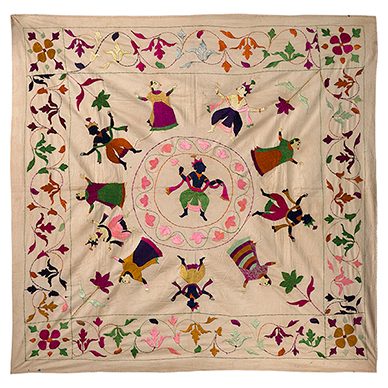
Introduction
Nestled in the majestic Himalayan foothills, Himachal Pradesh, a state in northern India, is not just renowned for its breathtaking landscapes but also for its rich cultural heritage. Among the many traditional arts that thrive here, the Chamba Rumal embroidery stands out as a unique and exquisite form of needlework. This article delves into the history, techniques, and contemporary relevance of Chamba Rumal, a craft that is not only a symbol of artistic expression but also a testament to India’s rich cultural tapestry.

Historical Background
Chamba Rumal, named after the Chamba region where it originated, dates back to the 17th century, during the reign of Raja Prithvi Singh. This art form gained royal patronage and flourished under the guidance of skilled craftsmen and women of Chamba. Intriguingly, it was initially a leisure activity for the women of the royal family and the nobility, who would create these embroidered pieces as gifts or for ceremonial purposes.
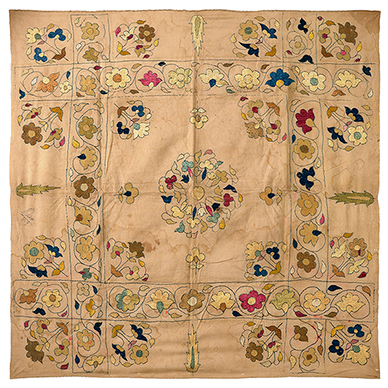
The Art Form and Its Techniques
Chamba Rumal is distinguished by its intricate and symmetrical embroidery, known as the ‘do-rukha’ (double-sided) technique. This method ensures that the embroidery appears identical on both sides of the cloth, making it a remarkable display of skill and precision. The base fabric is typically fine muslin or khaddar, providing a delicate canvas for the artists.
The motifs are usually drawn by miniature painters of the Pahari School and then embroidered by the women. These motifs are rich in symbolism and depict stories from Hindu mythology, scenes of Shringar (love), hunting scenes, wedding processions, and floral and animal patterns.

The Revival and Preservation
The art of Chamba Rumal was at the brink of extinction in the 20th century, owing to industrialization and changing lifestyle patterns. However, efforts by various government and non-government organizations, including the Indian National Trust for Art and Cultural Heritage (INTACH), have led to the revival of this exquisite art form. Training programs and workshops have been initiated to teach this craft to new generations, thus keeping the tradition alive.
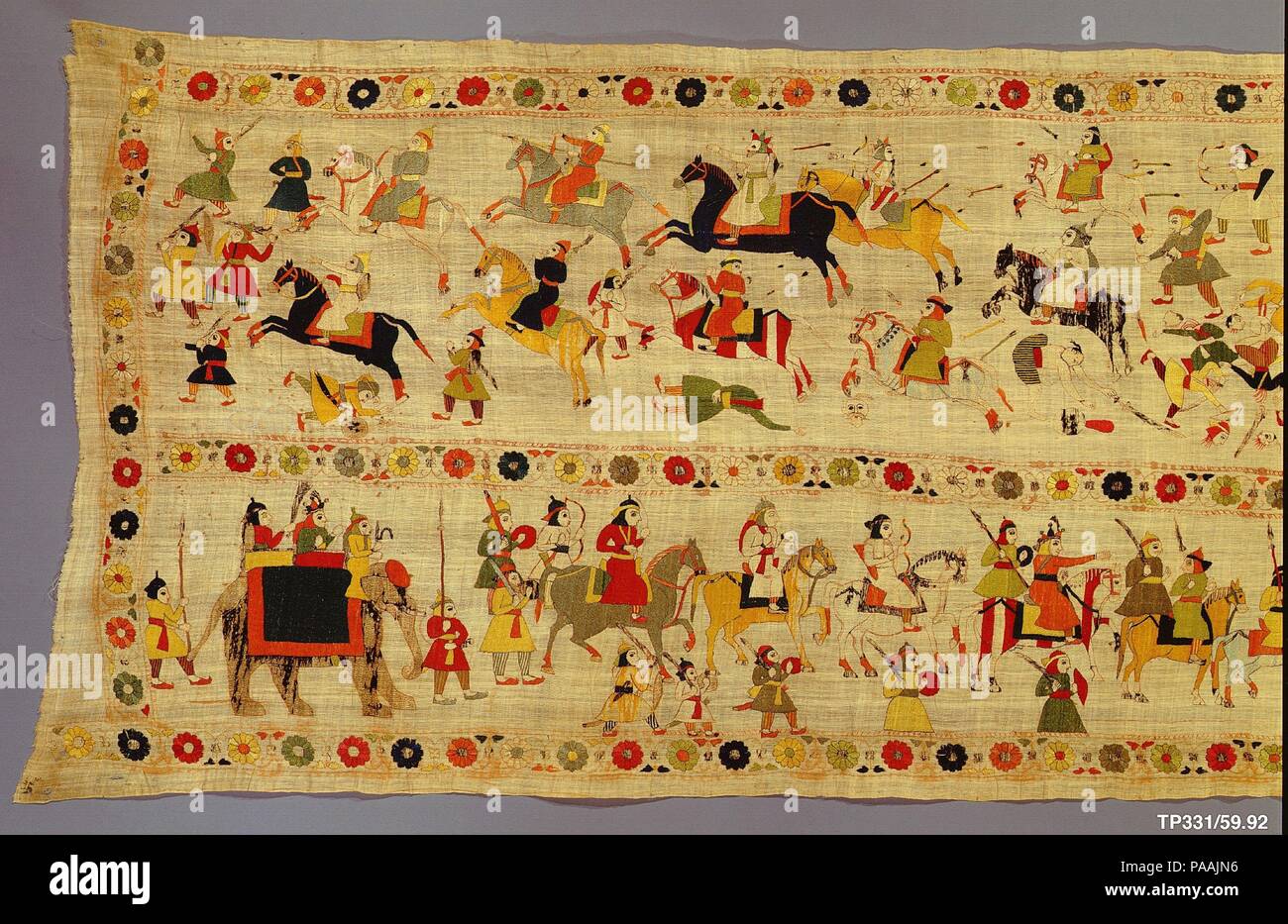
Contemporary Significance
Today, Chamba Rumal embroidery has found new life and relevance. It is no longer restricted to traditional designs but has evolved to include contemporary motifs and usages. These embroidered pieces have become sought-after items in both national and international markets, not just as pieces of cloth but as framed art, accessories, and home décor items.
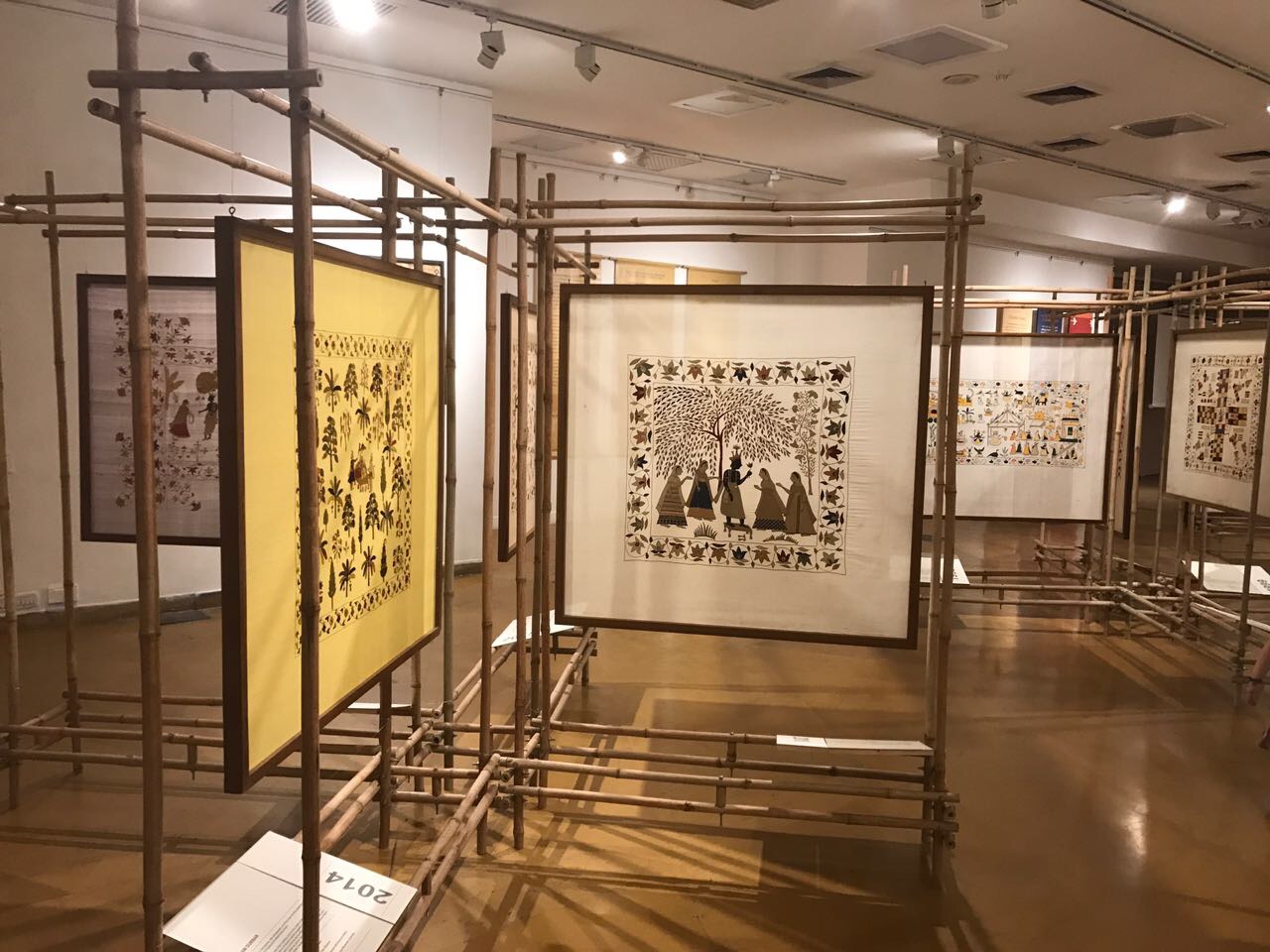
Geographical Indication and Recognition:
Chamba Rumal has been recognized as a Geographical Indication (GI), a status that not only validates its authenticity but also enhances its economic value. This recognition helps in preserving the unique identity and traditional techniques of the craft, distinguishing it from imitations.

Influence of Pahari Miniature Paintings:
The designs of Chamba Rumal are heavily influenced by the Pahari School of Miniature Paintings. This artistic collaboration results in exquisite and detailed imagery that often depicts scenes from Hindu mythology and the natural beauty of Himachal Pradesh.

Ceremonial Significance and Usage:
Traditionally, Chamba Rumals were used as a significant part of dowries in royal weddings and were cherished as valuable gifts. Their intricate designs and cultural importance made them a symbol of prestige and affection.

Preservation Efforts and Challenges:
The craft faces challenges like modernization and the declining number of skilled artisans. Various organizations are working towards its preservation through workshops, training programs, and raising awareness among younger generations.
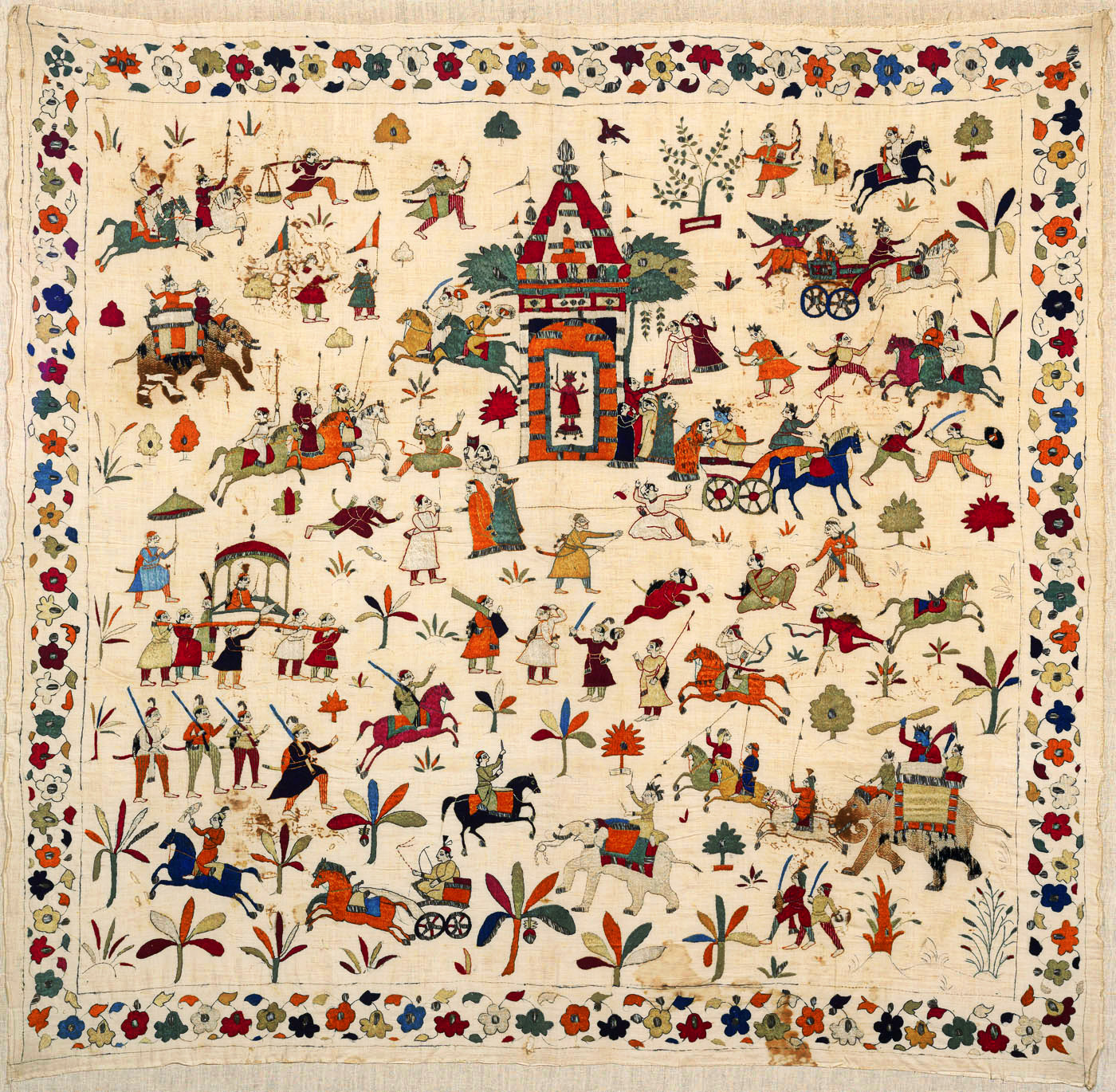
Global Appeal and Modern Adaptations:
Chamba Rumal has gained international fame, showcased in global art exhibitions. Artisans are adapting traditional designs to fit contemporary tastes, expanding its appeal and usage in modern home décor and fashion.
Artisan Stories and Personal Experiences:
Personal narratives from artisans reveal the dedication and skill involved in creating Chamba Rumal. These stories highlight the challenges and joys experienced by the craftsmen and women, providing an intimate glimpse into the world of this traditional art form.
Chamba Rumal, originating from the serene and picturesque Himachal Pradesh in India, is a unique and enchanting piece of handcrafted textile art that embodies the rich cultural heritage and artistic legacy of the region. This traditional craft has been passed down through generations of artisans, predominantly women artisans, who meticulously bring to life intricate designs and motifs inspired by nature, mythology, and the daily life of the Himalayas.
These artisans, often with stories as colorful as the Rumals they create, share personal experiences and tales that are deeply intertwined with their craft. The process of creating a Chamba Rumal begins with a fine muslin or silk cloth, which serves as the canvas.
Using naturally dyed silk threads, the artisans then embark on the painstaking task of embroidering, a process that can take weeks to months depending on the complexity of the design. The themes often depict scenes from famous Indian epics like the Mahabharata and the Ramayana, or idyllic representations of the flora and fauna of the Himalayas.
The artisans’ personal experiences reflect in the motifs they choose. Some tell tales of love and devotion, while others capture the daily rural life of Himachal Pradesh, showcasing their deep connection with their environment and heritage.
These Rumals are more than just pieces of embroidery; they are storied canvases that carry with them the personal touches, artistic flair, and the lived experiences of the artisans. Sadly, the art of Chamba Rumal was at the brink of extinction, but thanks to renewed interest and efforts by government and various NGOs, this exquisite art form is witnessing a revival, with artisans receiving the recognition they rightfully deserve.
This resurgence not only helps preserve a crucial part of India’s cultural tapestry but also empowers the artisans, mostly women, by providing them with a sustainable livelihood and a platform to narrate their stories through their art.

Supporting Sustainable Practices:
The revival of Chamba Rumal supports sustainable practices in the region. By promoting this traditional craft, it contributes to the local economy and helps in preserving an important cultural heritage.

Some of the renowned and award-winning artisans of Chamba Rumal embroidery include:
- Lalita Vakil: She is a prominent figure in the world of Chamba Rumal embroidery, known for her dedication to preserving and reviving this traditional art form. Lalita Vakil has trained thousands of people in Chamba Rumal embroidery and has been recognized with several awards for her contributions, including the Shilp Guru Award in 2009, the Nari Shakti Puruskar in 2017, and the Padma Shri in 2022.
- Maheshi Devi: She is another noted artisan in the field of Chamba Rumal embroidery, recognized for her exceptional skills and contributions to keeping this traditional craft alive.
- Chhimbi Devi: Along with Maheshi Devi, Chhimbi Devi is also a celebrated artisan in this field. Her work in Chamba Rumal embroidery has been acclaimed, contributing significantly to the craft’s survival and popularity.
These artisans have played a crucial role in not only preserving the traditional techniques of Chamba Rumal embroidery but also in adapting them to contemporary tastes and markets, thereby ensuring the craft’s ongoing relevance and appeal.

Conclusion
Chamba Rumal is more than just an embroidery technique; it is a legacy of Himachal Pradesh, embodying the state’s history, culture, and artistic excellence. As this art form navigates through the challenges of modernity and global appreciation, it holds a special place in the heart of India’s artistic heritage. Its preservation and promotion are not just about keeping an ancient skill alive but about celebrating the rich, diverse, and dynamic spirit of Indian culture.
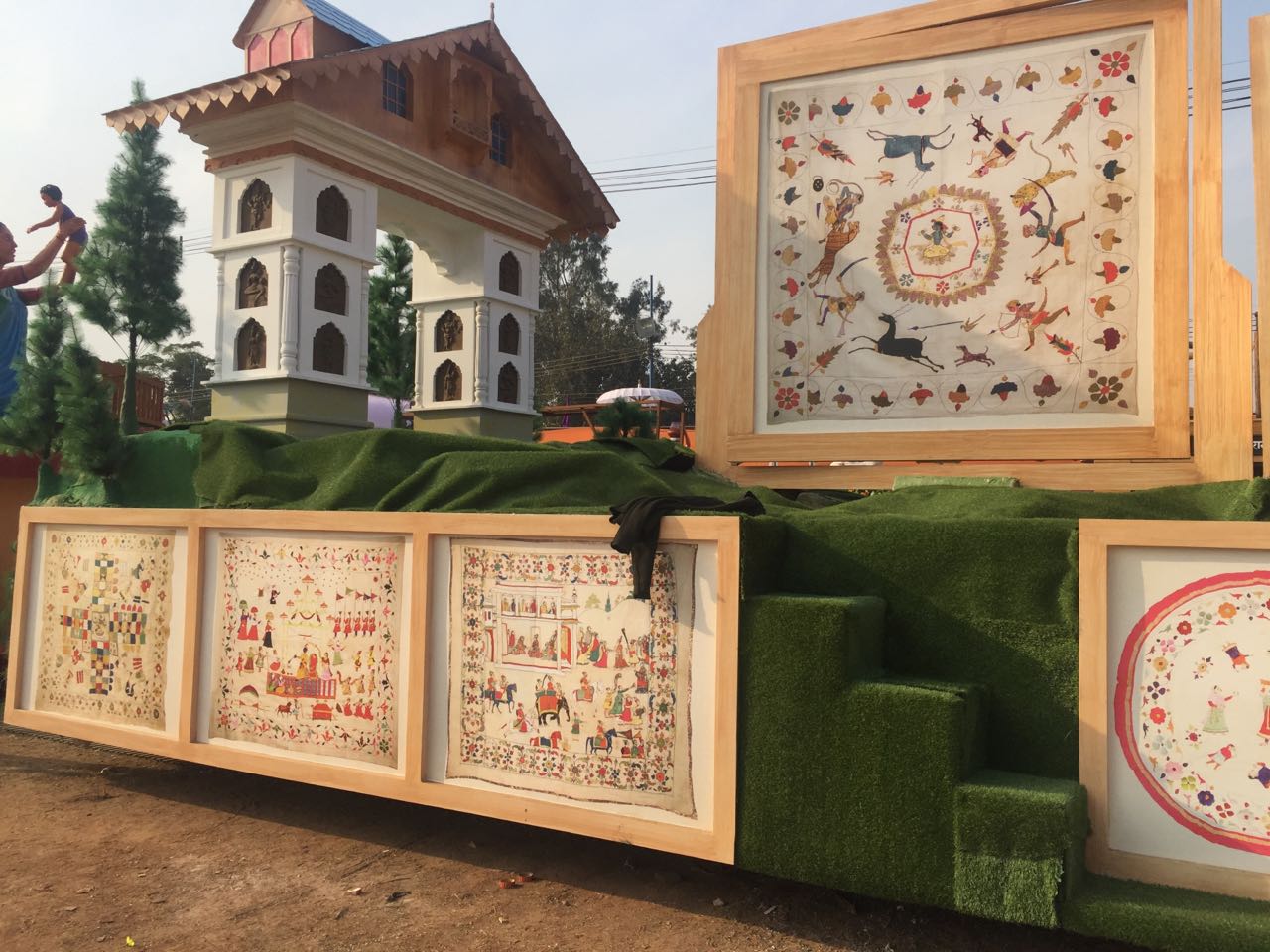
The Themes of Chamba Rumal Embroidery
The themes of Chamba Rumal embroidery are deeply rooted in Indian mythology and religious texts, showcasing a rich tapestry of cultural narratives. Prominently, the artwork often features scenes from the ‘Gita Govinda’, a 12th-century Sanskrit text by Jayadeva, which details the divine love story of Lord Krishna and Radha.
Additionally, motifs inspired by the ‘Bhagvat Purana’, a revered Hindu scripture narrating the life and times of Lord Krishna, are common. Depictions are not limited to Radha-Krishna; they also extend to Shiva-Parvati, capturing the essence of another significant divine couple in Hindu mythology.
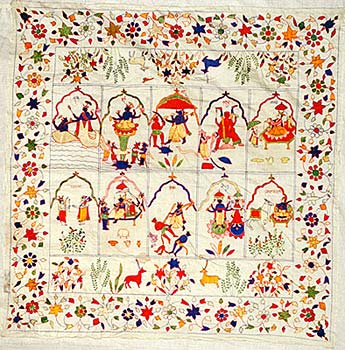
Furthermore, the Chamba Rumal embroidery draws inspiration from the frescoes in the Rang Mahal of Chamba. The Rang Mahal, known for its exquisite wall paintings, provides a visual feast that influences the designs and themes in this embroidery. This interplay between fresco art and embroidery highlights the interconnectedness of various art forms in Indian culture, where one form of artistic expression often inspires another, leading to a rich and diverse artistic heritage.
For more in-depth information on the themes and inspirations of Chamba Rumal embroidery, you can explore resources that delve into Indian art history and religious texts.

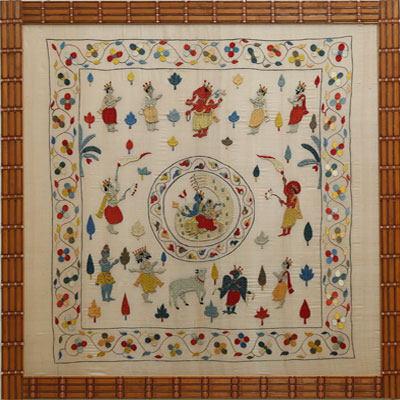
A few YouTube videos on Chamba Rumal
“A country remains poor in wealth both materially and intellectually if it doesnot develop its handicrafts and its handicrafts & handloom industries. It lives a lazy parasitic life by importing all the manufactured articles from outside”.
~ Mahatma Gandhi
